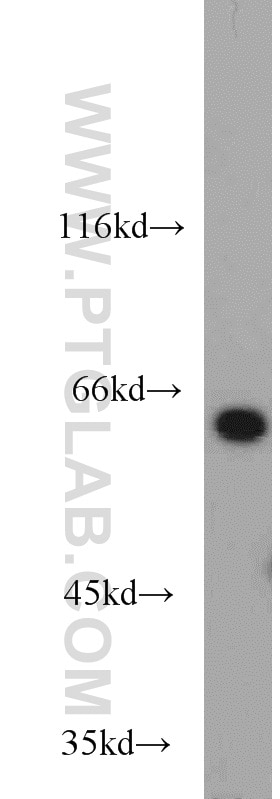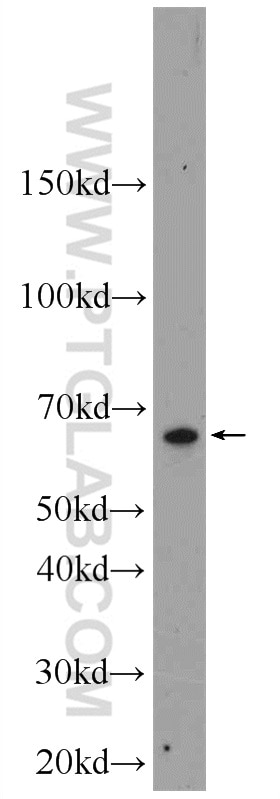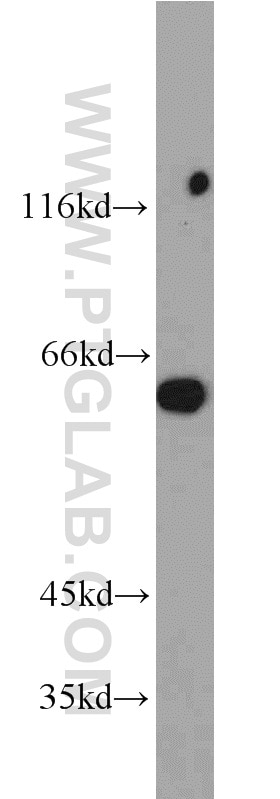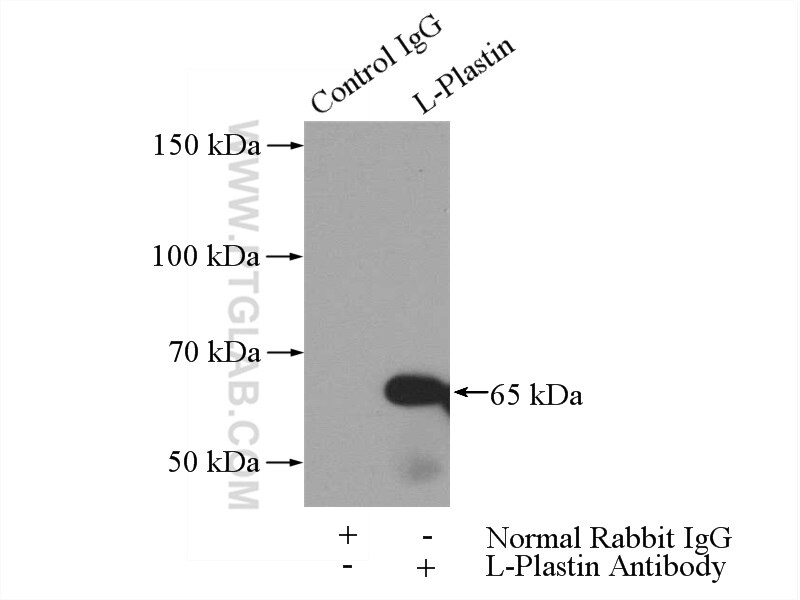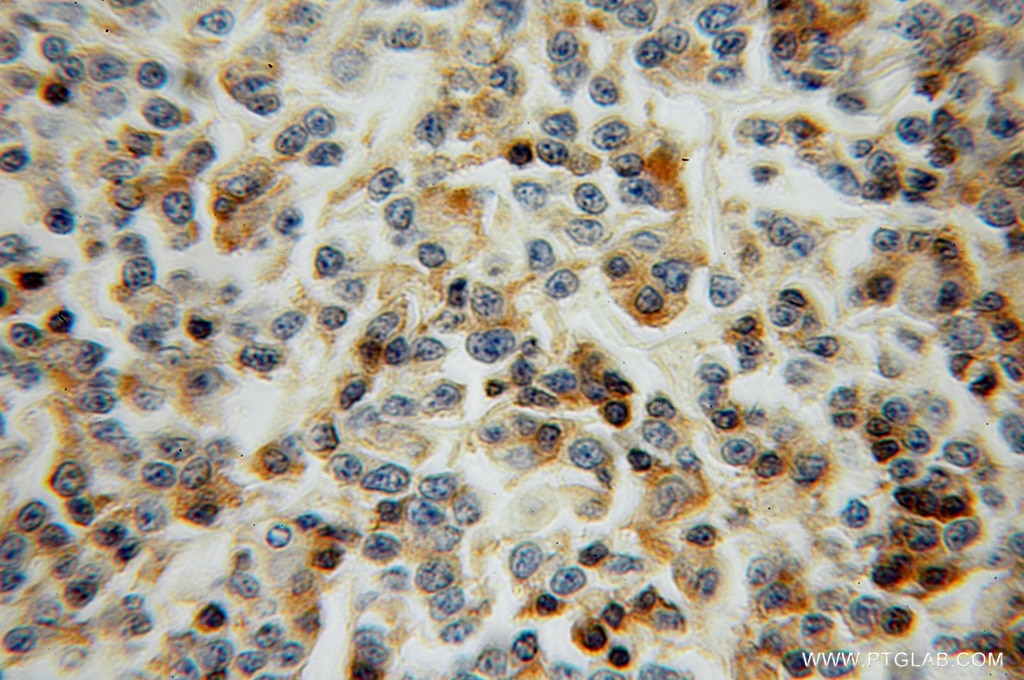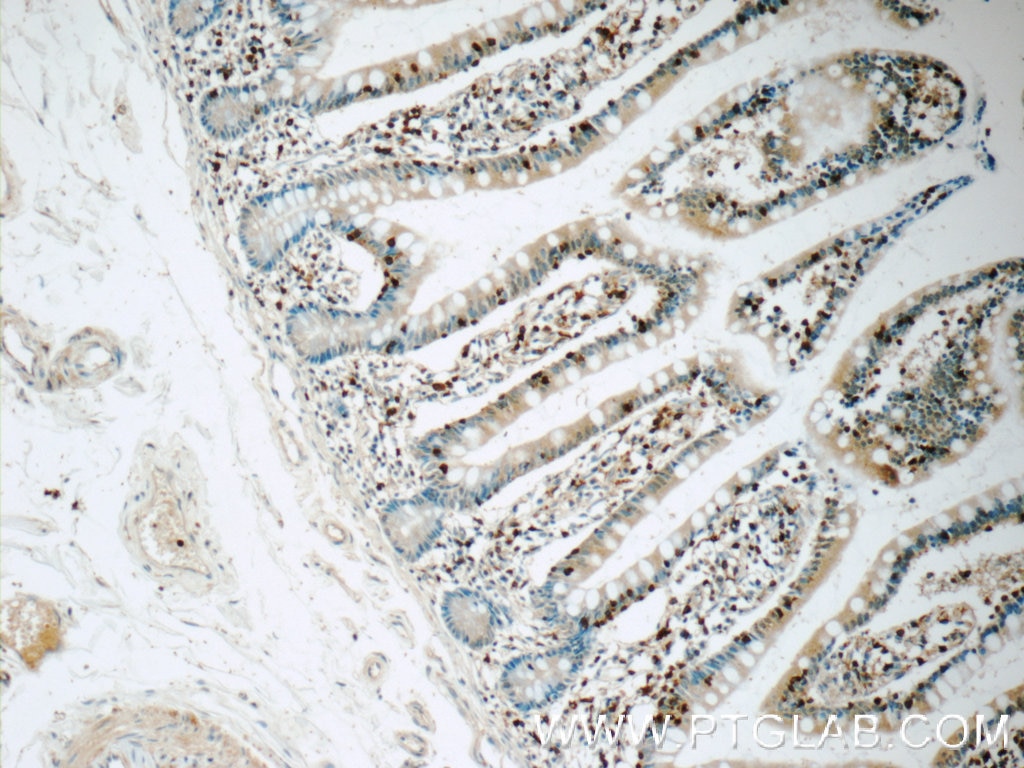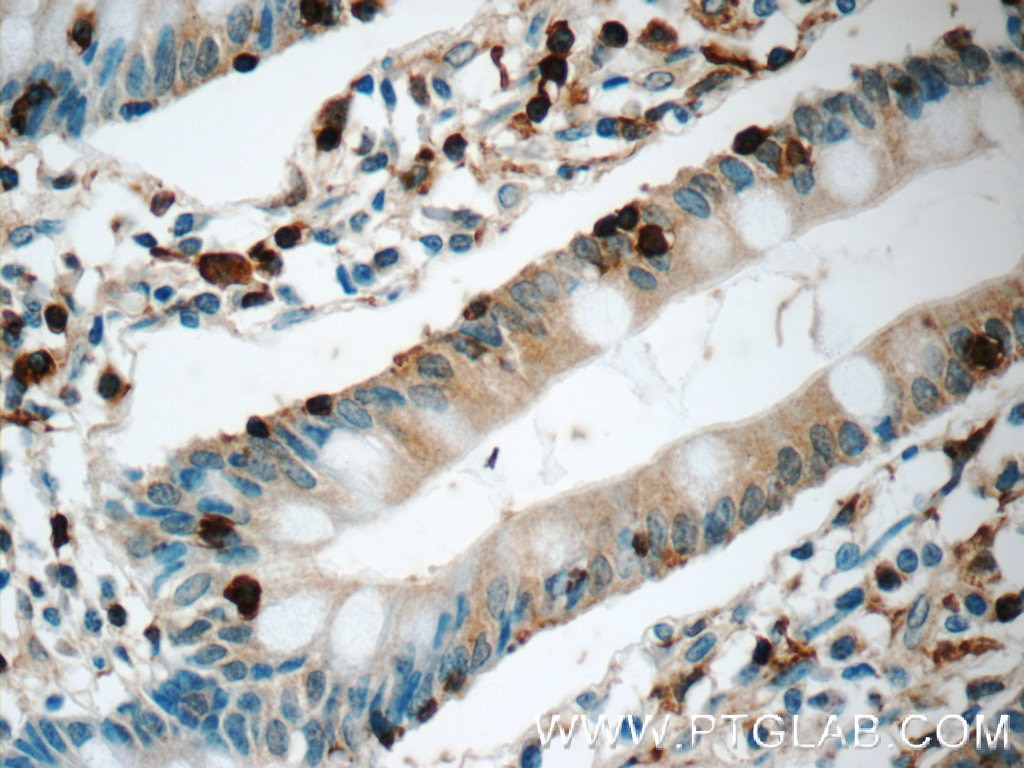Validation Data Gallery
Tested Applications
| Positive WB detected in | Jurkat cells, K-562 cells, mouse spleen tissue |
| Positive IP detected in | Jurkat cells |
| Positive IHC detected in | human lymphoma tissue, human small intestine tissue Note: suggested antigen retrieval with TE buffer pH 9.0; (*) Alternatively, antigen retrieval may be performed with citrate buffer pH 6.0 |
Recommended dilution
| Application | Dilution |
|---|---|
| Western Blot (WB) | WB : 1:500-1:2000 |
| Immunoprecipitation (IP) | IP : 0.5-4.0 ug for 1.0-3.0 mg of total protein lysate |
| Immunohistochemistry (IHC) | IHC : 1:20-1:200 |
| It is recommended that this reagent should be titrated in each testing system to obtain optimal results. | |
| Sample-dependent, Check data in validation data gallery. | |
Published Applications
| KD/KO | See 1 publications below |
| WB | See 6 publications below |
| IHC | See 4 publications below |
| IF | See 1 publications below |
Product Information
13025-1-AP targets L-Plastin in WB, IHC, IF, IP, ELISA applications and shows reactivity with human, mouse, rat samples.
| Tested Reactivity | human, mouse, rat |
| Cited Reactivity | human, mouse, monkey, zebrafish, hamster |
| Host / Isotype | Rabbit / IgG |
| Class | Polyclonal |
| Type | Antibody |
| Immunogen |
CatNo: Ag3571 Product name: Recombinant human LCP1 protein Source: e coli.-derived, PGEX-4T Tag: GST Domain: 278-627 aa of BC010271 Sequence: LENAGCNKIGNFSTDIKDSKAYYHLLEQVAPKGDEEGVPAVVIDMSGLREKDDIQRAECMLQQAERLGCRQFVTATDVVRGNPKLNLAFIANLFNRYPALHKPENQDIDWGALEGETREERTFRNWMNSLGVNPRVNHLYSDLSDALVIFQLYEKIKVPVDWNRVNKPPYPKLGGNMKKLENCNYAVELGKNQAKFSLVGIGGQDLNEGNRTLTLALIWQLMRRYTLNILEEIGGGQKVNDDIIVNWVNETLREAEKSSSISSFKDPKISTSLPVLDLIDAIQPGSINYDLLKTENLNDDEKLNNAKYAISMARKIGARVYALPEDLVEVNPKMVMTVFACLMGKGMKRV 相同性解析による交差性が予測される生物種 |
| Full Name | lymphocyte cytosolic protein 1 (L-plastin) |
| Calculated molecular weight | 627 aa, 64 kDa |
| Observed molecular weight | 64-70 kDa |
| GenBank accession number | BC010271 |
| Gene Symbol | L-Plastin |
| Gene ID (NCBI) | 3936 |
| RRID | AB_2136871 |
| Conjugate | Unconjugated |
| Form | |
| Form | Liquid |
| Purification Method | Antigen affinity purification |
| UNIPROT ID | P13796 |
| Storage Buffer | PBS with 0.02% sodium azide and 50% glycerol{{ptg:BufferTemp}}7.3 |
| Storage Conditions | Store at -20°C. Stable for one year after shipment. Aliquoting is unnecessary for -20oC storage. |
Background Information
LCP1, also known as L-Plastin, is a member of the Plastin gene family. The family members include L-Plastin (LCP1), T-Plastin (PLS3), and I-Plastin (PLS1), which can regulate the dynamic reorganization of the cytoskeleton by binding and cross-linking actin filaments. In lymphocytes, LCP1 can regulate immune responses, especially during inflammation and infection. It acts as a key regulator of T-cell activation by responding to co-stimulatory signals through TCR/CD3 and CD2 or CD28, and regulates the cell-surface expression of IL2RA/CD25 and CD69 (PMID: 17294403).
Protocols
| Product Specific Protocols | |
|---|---|
| IHC protocol for L-Plastin antibody 13025-1-AP | Download protocol |
| IP protocol for L-Plastin antibody 13025-1-AP | Download protocol |
| WB protocol for L-Plastin antibody 13025-1-AP | Download protocol |
| Standard Protocols | |
|---|---|
| Click here to view our Standard Protocols |
Publications
| Species | Application | Title |
|---|---|---|
Sci Signal A hepatokine derived from the ER protein CREBH promotes triglyceride metabolism by stimulating lipoprotein lipase activity | ||
Mol Ther Nucleic Acids Exosomal Transfer of LCP1 Promotes Osteosarcoma Cell Tumorigenesis and Metastasis by Activating the JAK2/STAT3 Signaling Pathway. | ||
J Cell Sci Iterative Bleaching Extends Multiplexity (IBEX) facilitates simultaneous identification of all major retinal cell types | ||
Cancer Biomark LCP1 is a prognostic biomarker correlated with immune infiltrates in gastric cancer | ||
Drug Dev Res Therapeutic role of Artemether in the prevention of hepatic steatosis through miR-34a-5p/PPARα pathway | ||

